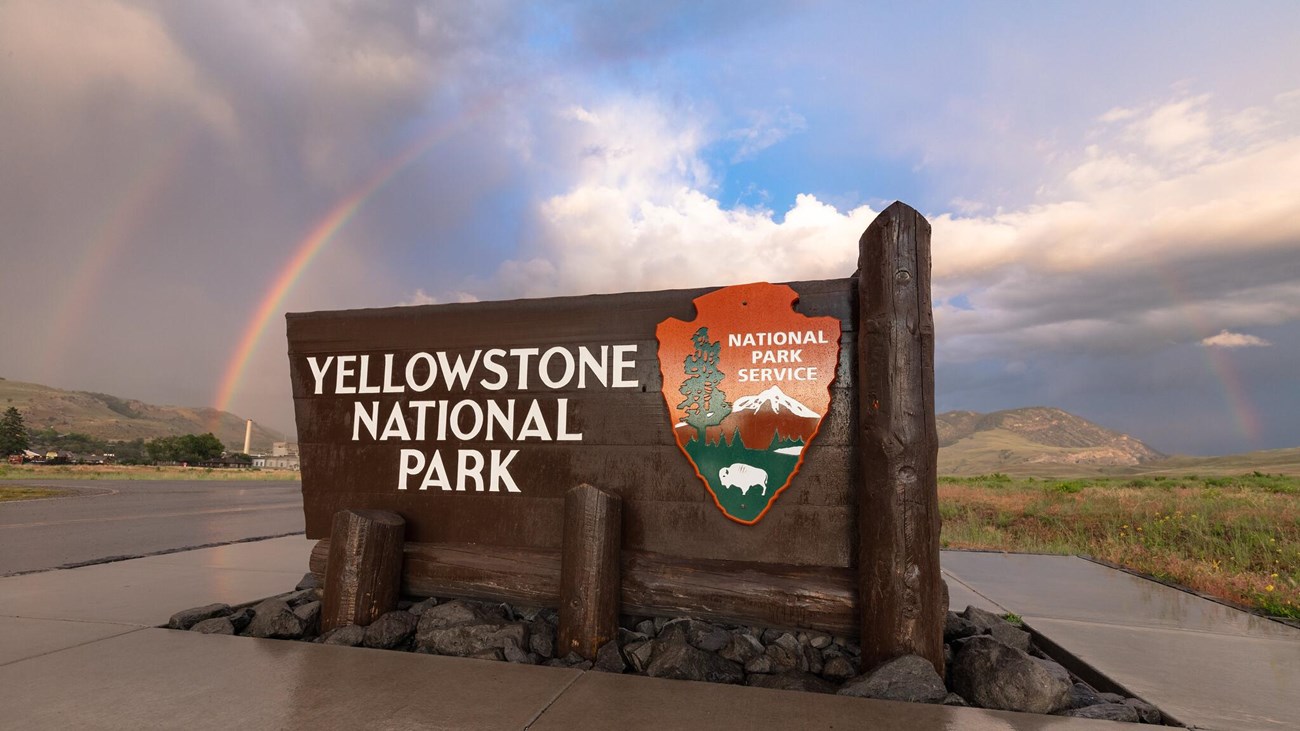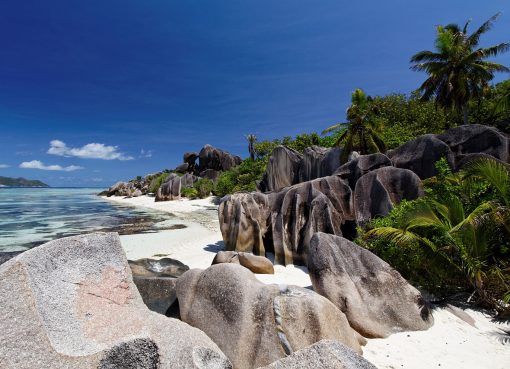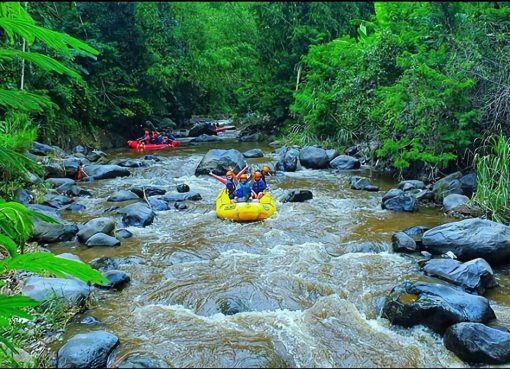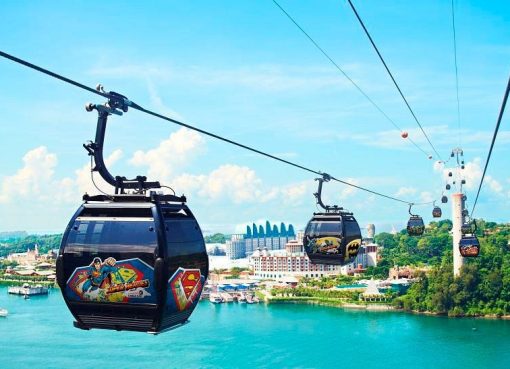Yellowstone National Park: A Journey Through America’s First Iconic Landscape
Contents
- 1 History of Yellowstone National Park
- 2 Geology and Unique Features of Yellowstone National Park
- 3 Flora and Fauna of Yellowstone National Park
- 4 Activities and Attractions in Yellowstone National Park
- 5 Best Times to Visit Yellowstone National Park
- 6 Accommodation Options in and Around Yellowstone National Park
- 7 Tips for Planning Your Trip to Yellowstone National Park
- 8 Conservation Efforts in Yellowstone National Park
- 9 Why Yellowstone National Park Should Be on Your Travel Bucket List
- 10 Author
Welcome to Yellowstone National Park, the breathtaking wonderland that offers a journey through America’s first iconic landscape. With captivating geothermal features, awe-inspiring wildlife, and majestic vistas, this national park promises an unforgettable adventure for nature enthusiasts and wanderlust seekers alike. Step foot into a world where geysers send towering plumes of steam into the air and vibrant hot springs paint the earth in hues of turquoise and orange. Immerse yourself in the sounds of cascading waterfalls and the serenade of native wildlife. Yellowstone National Park is a sanctuary for bison, grizzly bears, wolves, and other species, providing a unique opportunity to observe them in their natural habitat.
Explore the park’s expansive trails, meandering through dense forests, across flower-filled meadows, and along the edges of crystalline lakes. Marvel at the majestic peaks of the Rocky Mountains, standing tall as if guarding the park’s enchanting secrets. Whether you go hiking, camping, or wildlife spotting, Yellowstone National Park offers an escape into the great outdoors, captivating all who venture within its borders. Get ready to embark on an extraordinary journey through America’s natural wonders, where beauty awaits at every turn.
History of Yellowstone National Park
Established in 1872, Yellowstone National Park holds the distinction of being the first national park in the United States and, indeed, the world. The park is built upon a rich tapestry of indigenous cultures, with Native American tribes like the Shoshone, Crow, and Bannock calling this vast area home for thousands of years. They revered the land for its natural beauty and abundant resources, often incorporating the park’s features into their cultural narratives and spiritual practices. The stories of these tribes reflect a deep connection to the earth, a perspective that modern visitors can appreciate as they explore the park.
The park’s creation was largely influenced by explorers and naturalists who sought to unveil its wonders. In the early 1870s, a government-sponsored expedition led by Ferdinand Vandeveer Hayden brought national attention to Yellowstone’s unique features. The expedition documented the park’s geothermal wonders, stunning landscapes, and diverse wildlife, ultimately leading to the establishment of Yellowstone as a protected area. This monumental decision laid the groundwork for the national park movement, inspiring the establishment of many more parks across the United States and around the world.
Throughout its history, Yellowstone has faced numerous challenges, including poaching, logging, and the impacts of tourism. The park has continually adapted to protect its unique ecosystems, becoming a pioneer in conservation efforts. Today, Yellowstone National Park serves not only as a refuge for wildlife but also as a symbol of the American commitment to preserving natural beauty for future generations. Visitors can walk through history as they traverse the park, encountering remnants of historical structures and stories etched into the land itself.
Geology and Unique Features of Yellowstone National Park
Yellowstone National Park is a geological wonder, characterized by its unique topography and geothermal features resulting from volcanic activity. At the heart of the park lies a supervolcano, which has shaped the landscape over millions of years through a series of explosive eruptions. The last major eruption occurred approximately 640,000 years ago, and the caldera created by this event is one of the largest in the world. Today, the park’s geothermal activity is a testament to the underlying volcanic system, with over half of the world’s geysers and hot springs located within its borders.
The most famous geothermal feature in Yellowstone is Old Faithful, a geyser that erupts approximately every 90 minutes, sending a plume of steam and water high into the air. Visitors gather at the Old Faithful Visitor Center to witness this natural spectacle, which is accompanied by the rhythmic sounds of boiling water and hissing steam. Other notable geysers, such as Castle and Grand, contribute to the park’s reputation as a geothermal paradise, showcasing the raw power of nature.
In addition to geysers, Yellowstone is home to vibrant hot springs, including the iconic Grand Prismatic Spring. This multicolored marvel captivates visitors with its brilliant hues of blue, green, and orange, caused by microorganisms that thrive in the hot waters. The park’s unique geology also supports fumaroles and mud pots, each with its distinct characteristics. Exploring these features offers an unparalleled opportunity to witness the earth’s dynamic processes at work, reminding visitors of the beauty and power that lies beneath the surface.
Flora and Fauna of Yellowstone National Park
Yellowstone National Park is a sanctuary for a diverse array of flora and fauna, making it a vital ecosystem worth exploring. The park’s varied habitats, ranging from lush forests to open meadows, support over 1,700 plant species, including wildflowers, grasses, and towering conifers. The seasonal changes in flora create a dynamic landscape, with wildflowers blooming in the summer months, painting the park in vibrant colors, while autumn brings a stunning display of golden foliage.
Wildlife enthusiasts will find Yellowstone to be a haven for observing animals in their natural habitats. The park is home to iconic species, such as bison, elk, deer, and moose, which can often be seen grazing in meadows or wandering near rivers. Bison, in particular, roam freely throughout the park, embodying the spirit of the American West. Visitors can witness these magnificent creatures, especially during the spring calving season when young calves are a joyful sight.
In addition to large mammals, Yellowstone is also a refuge for predators, including grizzly bears, black bears, and wolves. The reintroduction of wolves in the 1990s has had a profound impact on the park’s ecosystem, helping to restore balance among prey species and contributing to healthier vegetation. Birdwatchers will also delight in the park’s avian diversity, with over 300 bird species recorded, ranging from majestic eagles to colorful songbirds. This rich tapestry of life makes Yellowstone a remarkable destination for anyone passionate about the natural world.

Activities and Attractions in Yellowstone National Park
With its vast expanse and diverse landscapes, Yellowstone National Park offers a plethora of activities and attractions to cater to every type of visitor. Hiking enthusiasts can explore hundreds of miles of trails, ranging from easy walks to challenging backcountry treks. Popular trails such as the Yellowstone River Trail and the Grand Canyon of the Yellowstone offer stunning views of waterfalls and breathtaking vistas, allowing hikers to immerse themselves in the park’s beauty.
For those seeking a more leisurely experience, scenic drives provide an excellent way to see the park’s highlights. The Grand Loop Road connects many of Yellowstone’s most iconic attractions, including the geothermal wonders of Norris Geyser Basin, the picturesque Yellowstone Lake, and the awe-inspiring views of the Grand Canyon of the Yellowstone. Stop at various pullouts along the way to take in the scenery, capture photographs, and witness the park’s abundant wildlife.
Wildlife watching is an essential part of any visit to Yellowstone. The Lamar Valley, often referred to as “America’s Serengeti,” is a prime location for spotting bison, elk, and even wolves. Early morning or late evening is the best time to observe these animals when they are most active. Additionally, guided tours and ranger-led programs offer insightful perspectives on the park’s ecology, history, and geology, enhancing the overall experience for visitors.
Best Times to Visit Yellowstone National Park
Choosing the best time to visit Yellowstone National Park can significantly impact your experience, as each season offers a unique perspective on the park’s beauty. Summer, from June to August, is the peak tourist season, attracting visitors from all over the world. During these months, the weather is generally warm and pleasant, making it ideal for hiking, camping, and exploring the park’s attractions. However, be prepared for crowds, as popular sites can become quite busy.
Spring, particularly late April to early June, is a magical time to visit Yellowstone. The park awakens from winter, with wildflowers beginning to bloom and wildlife emerging from hibernation. This season offers excellent opportunities for spotting newborn animals, such as bison calves and bear cubs. The weather can be unpredictable, so visitors should be prepared for varying temperatures and occasional snow.
Autumn, from September to mid-October, is another fantastic time to experience Yellowstone. The changing foliage creates a stunning backdrop, with vibrant yellows, oranges, and reds painting the landscape. Wildlife is also more active during this time as animals prepare for winter. Fall tends to be less crowded than summer, allowing for a more peaceful experience in the park. Winter, while cold and snowy, transforms Yellowstone into a serene wonderland for those who enjoy winter sports like snowshoeing and cross-country skiing.
Accommodation Options in and Around Yellowstone National Park
When planning a visit to Yellowstone National Park, accommodation options abound, ranging from rustic campgrounds to comfortable lodges. Inside the park, several campgrounds offer a unique opportunity to immerse yourself in nature. Campgrounds such as Grant Village and Madison provide basic amenities and easy access to popular attractions. Camping in Yellowstone allows you to enjoy the serenity of the wilderness and experience breathtaking sunrises and sunsets beneath the stars.
For those seeking more comfort, Yellowstone boasts several historic lodges, including the iconic Old Faithful Inn, which offers a unique blend of rustic charm and modern amenities. Staying in a lodge allows visitors to wake up close to the park’s geothermal features and enjoy the convenience of dining options on-site. Properties like Lake Yellowstone Hotel and Canyon Lodge are also excellent choices for those looking to relax after a day of adventure.
Outside the park, nearby towns such as West Yellowstone and Gardiner provide additional lodging options, including motels, cabins, and vacation rentals. These towns offer a range of amenities and conveniences, making them suitable bases for exploring jonitogel. Regardless of your preference, booking accommodations well in advance is crucial, especially during the peak summer months, to ensure you secure your desired lodging.
Tips for Planning Your Trip to Yellowstone National Park
Planning a trip to Yellowstone National Park can be an exciting but overwhelming endeavor. To make the most of your experience, start by researching the park’s layout and major attractions. Familiarize yourself with the Grand Loop Road and the locations of key features, such as Old Faithful, Mammoth Hot Springs, and the Grand Canyon of the Yellowstone. This will help you create a rough itinerary and prioritize the sites you want to visit.
It is also essential to pack appropriately for your trip. The weather in Yellowstone can be unpredictable, so layering your clothing is crucial. Bring sturdy hiking boots, a reusable water bottle, and a daypack for carrying essentials while exploring. Don’t forget to pack binoculars for wildlife viewing and a camera to capture the stunning landscapes.
Finally, educate yourself on park regulations and safety guidelines. Wildlife encounters are common in Yellowstone, so it’s important to maintain a safe distance and never approach animals. Familiarize yourself with bear safety recommendations and always adhere to Leave No Trace principles to protect the park’s delicate ecosystems. By preparing adequately, you can ensure a memorable and safe experience in one of America’s most beloved national parks.
Conservation Efforts in Yellowstone National Park
Conservation is at the heart of Yellowstone National Park’s mission, as the park strives to protect its unique ecosystems and preserve its natural beauty for future generations. Following its establishment, Yellowstone has led the way in conservation practices, becoming a model for national parks globally. One of the significant conservation efforts has been the restoration of native species, including the reintroduction of wolves in the 1990s. This initiative has not only helped balance the ecosystem but has also contributed to improved biodiversity across the park.
The National Park Service implements various programs to monitor and manage the park’s flora and fauna. This includes research on wildlife populations, habitat restoration, and invasive species management. Visitors are encouraged to participate in these efforts by following park guidelines, minimizing their impact on the environment, and reporting any sightings of invasive species.
Additionally, Yellowstone National Park is committed to educating visitors about the importance of conservation. Through ranger-led programs, informational kiosks, and visitor centers, guests learn about the park’s ecosystems, the threats they face, and how they can contribute to their preservation. By fostering a sense of stewardship among visitors, Yellowstone aims to inspire a collective effort in protecting this natural treasure for generations to come.
Why Yellowstone National Park Should Be on Your Travel Bucket List
Yellowstone National Park is not just a destination; it is an experience that leaves a lasting impact on all who visit. The park’s stunning landscapes, unique geothermal features, and diverse wildlife combine to create a natural wonder that is truly unparalleled. Whether you are hiking the scenic trails, witnessing the iconic geysers, or simply taking a moment to enjoy the tranquility of nature, Yellowstone offers an escape into a world of beauty and adventure.
The rich history and ongoing conservation efforts further enhance the significance of Yellowstone, making it a place of both natural and cultural importance. By visiting, you are not only experiencing one of America’s most cherished landscapes but also supporting the preservation of its ecosystems and wildlife.
For nature enthusiasts, adventure seekers, and families alike, Yellowstone National Park should undoubtedly be on your travel bucket list. Its breathtaking vistas and unique features promise unforgettable memories and moments of connection with the natural world. So pack your bags, prepare your itinerary, and get ready to embark on an extraordinary journey through America’s first iconic landscape. Adventure awaits in Yellowstone National Park!
Also read: Tomorrowland: A Global Gathering for Trance Lovers in Belgium



